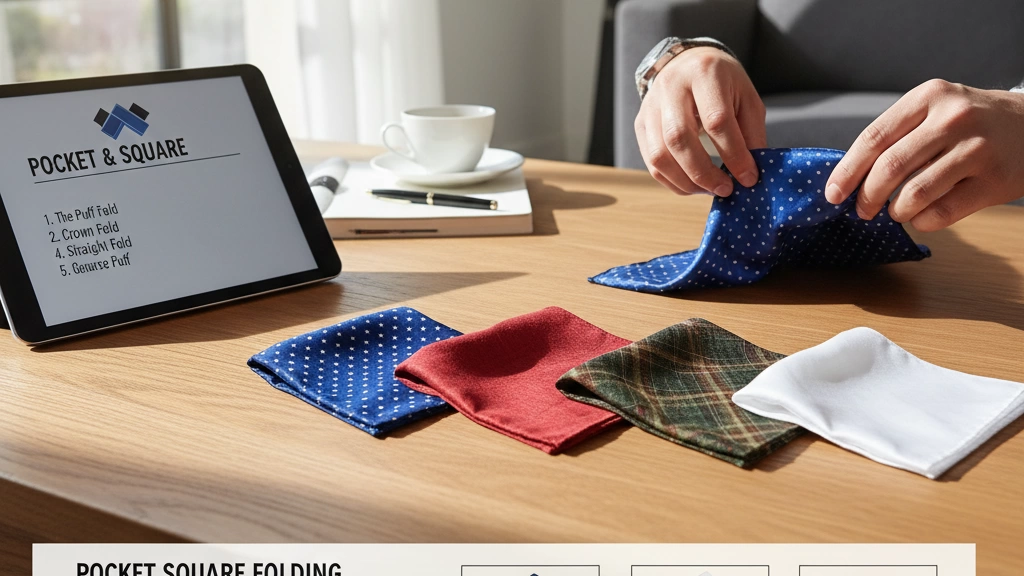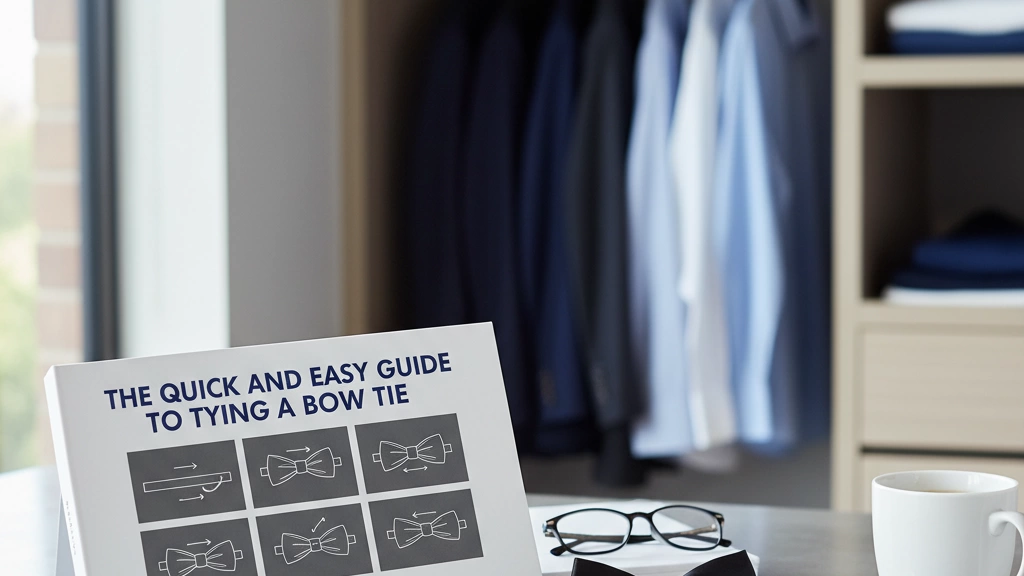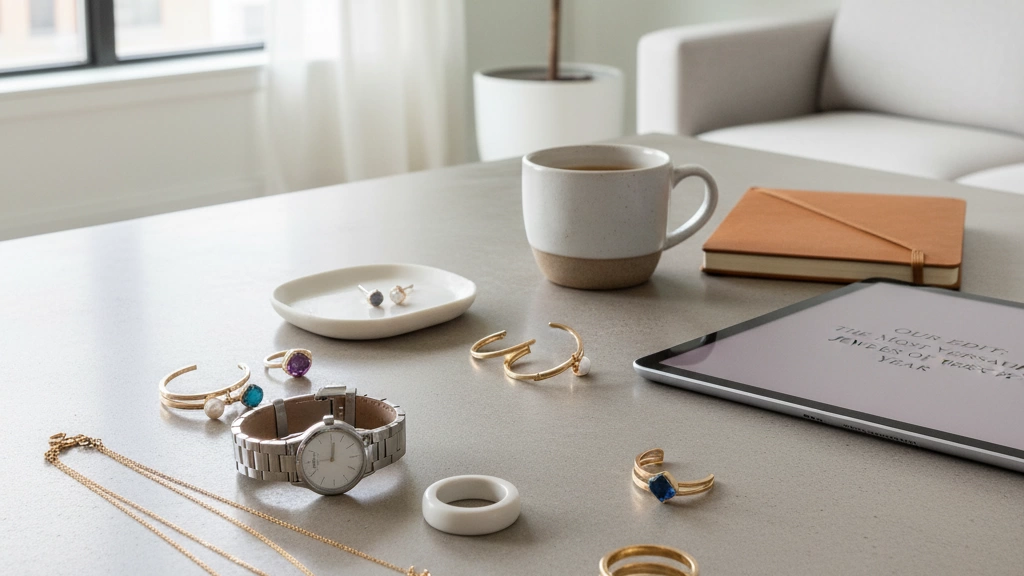3 Simple Pocket Square Folds Even a Beginner Can Master
If you’ve ever felt a little lost staring at your suit pocket, wondering how to add that sharp finishing touch without looking like you tried too hard, you’re not alone. Pocket squares can instantly elevate your outfit—but mastering the folds can seem intimidating. The good news? You don’t need complicated tricks or fancy skills to look polished. In fact, these 3 simple pocket square folds even a beginner can master will have you looking effortlessly stylish in under 30 seconds. Whether it’s a wedding, job interview, or date night, these classic folds work with any fabric and suit every occasion. Let’s get you confidently folding like a pro—no fuss, no stress.
Choosing the Right Pocket Square for Beginners
Starting with the right pocket square makes all the difference. If you’re new to this, here’s what to keep in mind:
Best fabrics:
- Linen is great for beginners. It’s sturdy, easy to fold, and holds its shape well.
- Cotton is another solid option—soft, breathable, and less slippery than silk.
- Silk looks luxury but can be tricky because it’s slippery and might not hold folds well at first.
Ideal sizes:
- For beginners, stick to pocket squares between 10 and 16 inches square. They’re easy to handle and fit most jacket pockets without bunching up.
Solid white vs subtle patterns:
- A solid white pocket square is the easiest to pair and master. It’s classic and suits almost any occasion.
- If you want a bit of personality without overdoing it, go for subtle patterns like small dots, light stripes, or soft checks. These add interest but keep things simple for first-timers.
Choosing the right pocket square fabric and style will set you up for success with the folds you master next.
The Only 3 Folds You’ll Ever Need
When starting with pocket squares, you don’t need to overwhelm yourself with dozens of folds. There are three simple pocket square folds that cover nearly every occasion and style—easy to learn, quick to do, and sharp every time. Master these, and you’ve got your beginner pocket square tutorial sorted.
- The Presidential Fold (Square Fold) – clean, classic, and perfect for formal settings.
- The One-Point Fold (Single Peak) – slightly more casual but still polished, great for smart-casual and daytime events.
- The Casual Puff Fold – relaxed and stylish, ideal for creative environments and laid-back occasions.
These folds are designed to be beginner-friendly with clear step-by-step instructions that anyone can follow. Plus, they work with a variety of fabrics and pocket square sizes, so you can mix and match confidently. Whether you’re heading to a wedding, an interview, or a cocktail party, these three styles have got you covered.
The Presidential Fold (Square Fold or Flat Fold)
The Presidential Fold is the ultimate classic—clean, sharp, and perfect for formal occasions. Think business meetings, black-tie events, weddings, and interviews. It’s the go-to for showing you mean business without any fuss.
When to use:
- Business settings
- Black-tie events
- Weddings
- Job interviews
Step-by-step Presidential Fold instructions:
- Lay your pocket square flat on a clean surface.
- Fold it in half horizontally, creating a rectangle.
- Fold it in half vertically to form a smaller square.
- Fold one side toward the center, then the other side, to shape it to your pocket’s width.
- Adjust the height so about a quarter to half an inch shows above your pocket.
- Slide it neatly into your breast pocket, flat and straight.
Common mistakes & how to fix them:
- Too tall or too short: Make sure the fold fits your pocket depth; adjust folds to suit the size.
- Wrinkles: Iron or lightly steam before folding for that crisp look.
- Uneven edges: Take your time folding symmetrically; use a flat surface to align edges.
This fold is all about understated elegance, and mastering it instantly upgrades your look. For more on matching your pocket square with your outfit, check out this ultimate guide to matching your tie and pocket square.
The One-Point Fold (Single Peak or Triangle Fold)
The One-Point Fold is perfect for smart-casual settings, daytime events, or dates where you want a bit of personality without going overboard. It’s a simple fold that shows a neat, triangular peak poking out — clean but a bit more relaxed than the Presidential fold.
When to use:
- Smart-casual occasions
- Daytime events
- Casual dates
How to fold (5 easy steps):
- Lay your pocket square flat.
- Fold it in half diagonally to form a triangle with a sharp point.
- Fold one corner of the triangle towards the middle (just past the center).
- Fold the other corner over the first, also just past the middle, to create a slightly narrow shape.
- Tuck it neatly into your pocket with the pointed corner sticking up.
Pro tip: Position the peak just a little off-center for a natural, effortless look — perfectly imperfect always wins.
This fold balances style and simplicity, making it an ideal starter fold before trying more complex styles. It’s a great way to add a little flair without fuss. For more insights on dressing sharply for events, check out our guide on how to look polished for weddings and special occasions.
The Casual Puff Fold

When to use: This fold is perfect for cocktails, creative industries, and summer weddings where you want to keep things relaxed but stylish.
Step-by-step instructions:
- Lay your pocket square flat.
- Pinch the center and lift it up, letting the edges hang down.
- With your other hand, gently squeeze the fabric just below the pinch.
- Tuck the folded end into your pocket, letting the puffed part peek out naturally.
Getting the effortless look: The key is not to over-style it. Keep the puff loose but controlled—too much fluff and it looks messy, too little and it falls flat. Choose a fabric like linen or cotton for a soft puff that holds shape better than slippery silk.
Variations:
- Loose puff: Casual and soft, perfect for summer events.
- Structured puff: More defined edges and a tighter hold, suitable for creative work settings where a bit more polish is needed.
For more style tips on adding accessories to your outfit, check out our guide on must-have accessories for your summer wardrobe.
Quick Comparison Table: Pocket Square Folds for Beginners
| Fold Name | Difficulty Level | Time to Fold | Formality Level | Best Occasion |
|---|---|---|---|---|
| Presidential Fold | Easy | 1-2 minutes | High (Formal) | Business, Weddings, Interviews, Black-Tie Events |
| One-Point Fold | Easy | 1-2 minutes | Medium (Smart-Casual) | Daytime Events, Dates, Casual Office Settings |
| Casual Puff Fold | Easy | Under 1 min | Low (Casual) | Cocktails, Creative Industries, Summer Weddings |
This table makes it simple to pick the right fold based on how much time you have, your event’s level of formality, and your personal style. For beginners, all three folds are easy to learn and master quickly.
Bonus Tips for Looking Like a Pro

To keep your pocket square fold neat all day, start with the right fabric. Linen and cotton hold shapes better than slippery silk for beginners, but if you prefer silk, try lightly starching it or using a small pocket square clip inside the pocket to prevent slipping—a hidden trick that works wonders.
When matching your pocket square color to your tie or shirt, follow these three safe rules:
- Match one color, not the entire pattern. For example, if your tie has subtle blue accents, pick a pocket square with blue tones.
- Stick to complementary colors rather than exact matches to keep your look balanced.
- Use a solid or minimal pattern if your tie is busy, so the pieces don’t compete.
Pocket depth can sometimes be tricky; if your pocket is shallow or tight, fold the square thinner or try a less bulky fold like the Presidential Fold. For deeper pockets, a puff fold works great but avoid stuffing your pocket square too much—overloading leads to that awkward, stuffed look.
Lastly, some tips on what to never do:
- Never over-coordinate. Your pocket square shouldn’t exactly match your tie and shirt—it’s about complementing, not copying.
- Avoid bulky folds that overwhelm your jacket pocket.
- Don’t forget to check your pocket square during the day. A quick straighten after sitting down can keep you looking sharp.
Following these tips will ensure your pocket square looks polished, effortless, and professional—every time.
For more ideas on accessorizing with balance, check out this guide on colors in jewelry and what’s hot right now.
Frequently Asked Questions
Can I wear a pocket square without a tie?
Absolutely. A pocket square can add a dash of style even when you\’re skipping the tie. It works well for smart-casual outfits or to add personality to a blazer. Just keep the fold simple, like the Casual Puff, for a relaxed but polished look.
Silk vs linen vs cotton — which is easiest for beginners?
For beginners, cotton and linen pocket squares are usually easier to handle because they hold folds well and aren’t too slippery. Silk looks great but can be trickier since it tends to shift and lose shape quickly. If you want to dive deeper into fabric choices, check out our detailed guide on silk, linen, or cotton pocket squares.
White pocket square rules in 2025
White pocket squares remain a classic staple, especially for formal and business events. In 2025, the trend leans toward crisp, well-ironed squares in solid white or with very subtle borders. Avoid overly flashy patterns if you want to keep the look timeless and versatile.
How to iron/steam a pocket square fast
Quick tip: Use a low-heat iron or a handheld steamer to remove creases. Always place a thin cloth between the iron and the pocket square to protect delicate fabrics like silk. For cotton and linen, a slightly damp cloth under the iron works best to get crisp folds without damage.
Cheap vs luxury pocket squares — does it matter for these folds?
For simple folds like the Presidential or One-Point, cheaper cotton or linen pocket squares do just fine. However, luxury silk squares shine more in casual puff folds where the fabric’s texture stands out. That said, quality does impact how well the pocket square holds its shape throughout the day. For more on balancing style and accessories, see our tips on jewelry pairing rules for a polished look.


